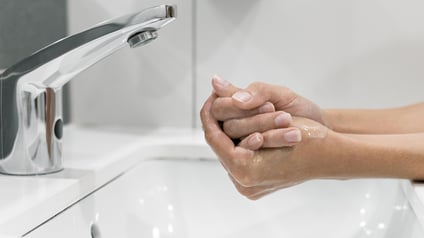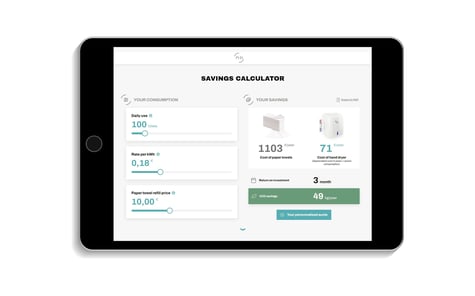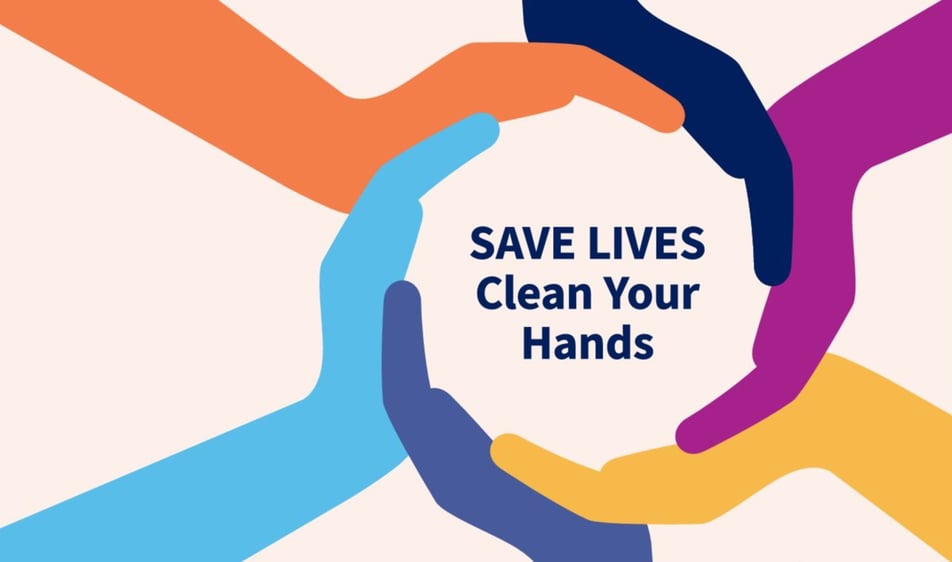Good hand hygiene practices
As a professional, it is important to understand good hand hygiene practices in order to maintain a clean and healthy work environment. On the occasion of World Hand Hygiene Day, JVD offers you the opportunity to explore in detail the best practices for keeping your hands clean. Handwashing and hand drying, with hand dryers or paper towels? Let's start by reviewing the essential steps.
Handwashing, the foundation

Regular handwashing is the first important step. Hands should be washed for at least 20 seconds with water and soap, focusing on cleaning the palms, fingers, nails, and wrists. The use of hand sanitizers is also recommended to kill bacteria and viruses on the hands when water and soap are not available. It is important to remember to wash your hands before and after eating, using the restroom, handling food, coughing or sneezing, and after touching dirty or contaminated surfaces. By following these good hand hygiene practices, we can maintain a clean and healthy work environment for everyone.
And it seems that the French have understood this. According to the Harris Interactive - JVD study conducted in November 2018, the French already had the habit of washing their hands in their daily routines. For example, on average, 91% of them washed their hands systematically or often after using the toilet*. This study was conducted before the Covid-19 pandemic, which led to a drastic increase in awareness of hand hygiene. It is likely that the numbers regarding the percentage of French people who always wash their hands when they are sick have increased positively.
Hand drying, equally important
 However, when 97% of French people claim to dry their hands after washing them*, do they have the correct practices in mind? The topic of hand drying is less discussed than handwashing, but equally important. Indeed, washing hands without proper drying is equivalent to not washing them at all, encouraging the spread of germs and bacteria.
However, when 97% of French people claim to dry their hands after washing them*, do they have the correct practices in mind? The topic of hand drying is less discussed than handwashing, but equally important. Indeed, washing hands without proper drying is equivalent to not washing them at all, encouraging the spread of germs and bacteria.
The World Health Organization (WHO) recommends using disposable paper towels or electric hand dryers to thoroughly dry hands after washing. Disposable paper towels are preferred over cloth towels as they allow for faster and more effective drying, while cloth towels can retain moisture and promote bacterial proliferation.
That being said, a survey conducted by Harris Interactive among the French population highlighted that the preferred hand drying solution for the French is electric hand dryers.
Drying with paper towels or electric hand dryers, what's the difference?
Health organizations worldwide agree that proper handwashing and drying can prevent the spread of infectious diseases. However, due to rumors and lack of information, not everyone has a clear understanding of the effectiveness of different drying solutions. To address the question of the most hygienic drying solutions, renowned researchers from the University of Arizona recently published their review titled "Comparison of Electric Hand Dryers and Paper Towels for Hand Hygiene: A Critical Review of the Literature" in the Journal of Applied Microbiology. Out of the 293 available studies and reports on hand drying, they selected and analyzed the 23 most consistent in terms of scientific evidence and experimental process. The conclusion of their review is clear: "... there is no difference in bacterial counts when drying with paper towels or electric hand dryers." Both solutions are equally viable and hygienic, and strongly recommended after handwashing.
Where the difference lies is primarily in economic and environmental aspects, making it important to choose the solution that best suits the daily usage of restroom facilities in your professional spaces.
Hand dryers or paper towel dispensers? Discover through our cost-saving simulator the most advantageous solution to equip your establishment.





Laissez un commentaire